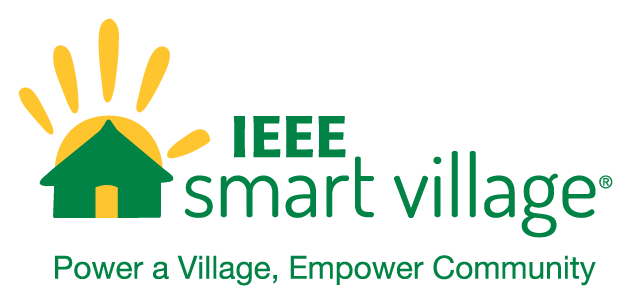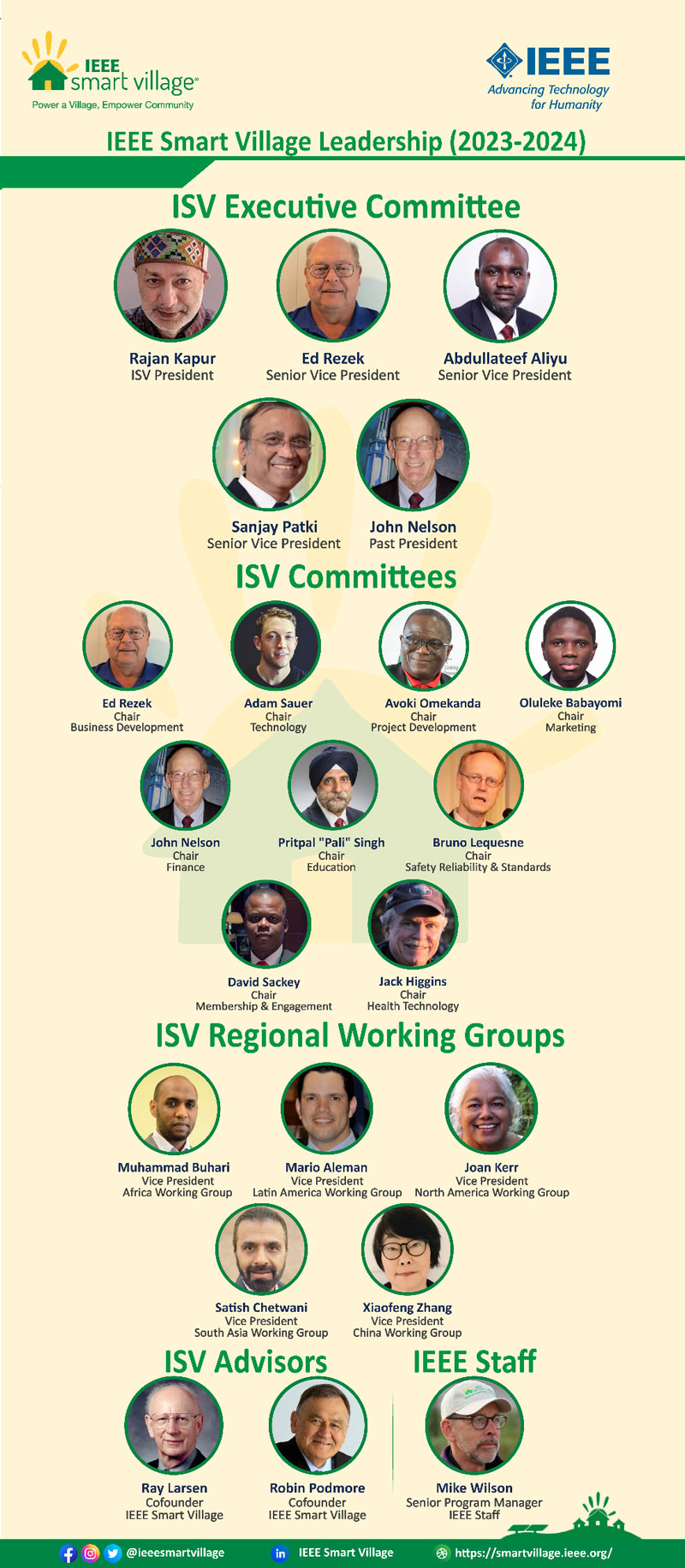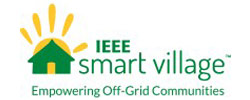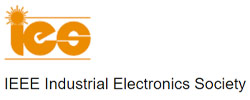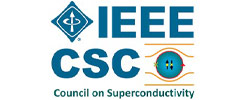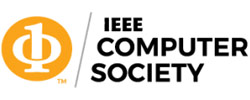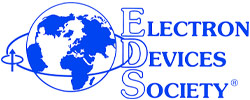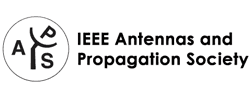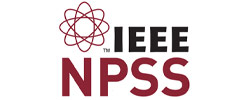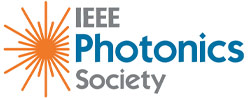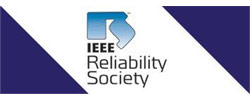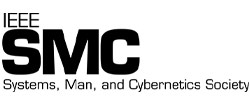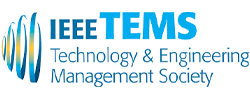EMPOWER: Vol 4. Issue 1 – March / April 2023
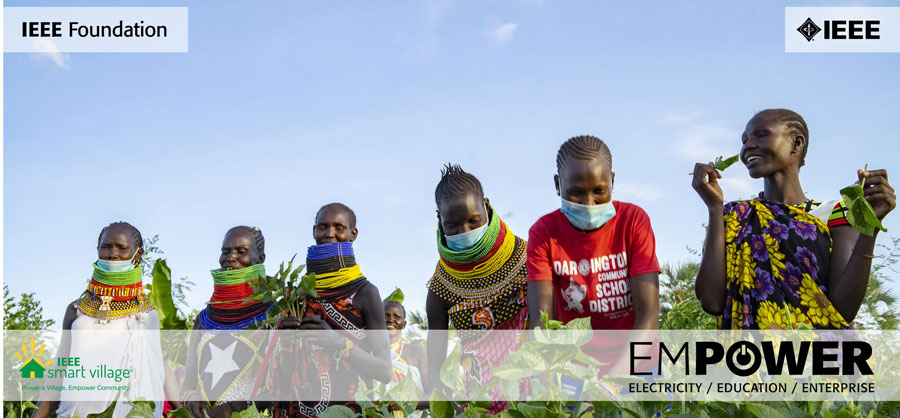

ISV Past President’s farewell message
John Nelson
Congratulations to Rajan Kapur who was elected in the January 2023 meeting of the ISV Governing Board as the new ISV President. Rajan has been a strong Senior Vice President of ISV with great practical success and experience.
Congratulations to Rajan Kapur who was elected in the January 2023 meeting of the ISV Governing Board as the new ISV President. Rajan has been a strong Senior Vice President of ISV with great practical success and experience.
While the succession of Rajan to ISV President may have been a surprise to some, a little explanation is warranted. IEEE has a practice to limit the terms of the IEEE Officers to between one and two years. I have found that the two-year term is ideal where the first year is used to learn and understand the job responsibilities and the second year is used to put the first year’s experiences to practice.
I was elected in June 2020 to reorganize ISV into a multi-society IEEE TAB program. This was during the initial phases of Covid which presented challenges including the development of funding, managing finances and developing programs. I served as president of ISV for two and a half years which allowed me to learn the ropes of ISV and implement changes. The election of Rajan to ISV president in January is consistent to the two-year term limitation. Rajan’s term will run two years and we need to start planning for his successor as well as the other officers within ISV. Succession planning is necessary to allow others an opportunity to serve and bring in new talents and ideas. As past president, I will continue to support Rajan and ISV like I have done for the last two and a half years. I have also assumed the role of FinCom VP allowing Ed Rezek to become Sr VP and head of ISV Development.
During my tenure, I had great mentors to follow in Ray Larsen and Robin Podmore, the two founding fathers of ISV. I also had great support from IEEE Staff and especially with ISV’s Senior Program Manager, Mike Wilson, along with his wife Renae. Renae has been a strong supporter of ISV and has helped Mike with promotion of ISV. I am sorry in advance that I cannot recognize everyone who has contributed to the success of ISV, but time and space are limited. With the support of literally hundreds of people, ISV witnessed many changes over the last two and a half years. Most importantly, the decentralization of ISV into Regional Working Groups was one of our major accomplishments:
- The South Asia Working Group (SAWG) was reorganized with great success by the fine leadership of Sanjay Patki who is now a Sr. VP of ISV.
- The Africa Working Group (AWG) was formed and now is represented in over 42 of the 54 African countries. Its membership is well over 300 with a high percentage of women. Abdullateef Aliyu is credited for this success and is also now a Sr. VP of ISV.
- Latin America was under-represented in ISV. Therefore, we set up a Latin America Working Group (LAWG) which is now headed by Mario Aleman. Several Latin American projects are either underway or in the queue.
- Xiaofeng was a volunteer who brought a unique perspective of China to ISV. She became the first VP of the China Working Group (CWG) and had a very successful ISV CWG Forum in November 2022 with an attendance of over 300.
- The greatest surprise was finding the need of ISV in North America primarily with indigenous people who have little or no access to cost effective electricity. The North American Working Group (NAWG) was formed to fill this gap and Joan Kerr became the first NAWG VP.
I am humbled to have had the opportunity to lead ISV in its new role as a multi-society humanitarian program. ISV has and is doing a lot to bring IEEE Technology, Education and Entrepreneurship to underserved communities around the world. I will continue to support ISV wherever and whenever I can.
Natoot Farm Upscale Project
In 2022, Bright Hope Turkana and IEEE Smart Village initiated the Natoot Farm to build a solar powered water storage system to increase water storage capacity. The farm is located in Lodwar, Turkana Central, one of the poorest towns in northern Kenya. The project was completed in July 2022 with great success. Over 350 households are currently served by this financially sustainable farm, which employs more than a hundred local farmers. Bright Hope Turkana is a partnership with the Full Gospel Churches of Kenya.
In 2022, Bright Hope Turkana and IEEE Smart Village initiated the Natoot Farm to build a solar powered water storage system to increase water storage capacity. The farm is located in Lodwar, Turkana Central, one of the poorest towns in northern Kenya. The project was completed in July 2022 with great success. Over 350 households are currently served by this financially sustainable farm, which employs more than a hundred local farmers. Bright Hope Turkana is a partnership with the Full Gospel Churches of Kenya.
The overarching goal was to design, develop and manufacture a 11 KWp (kilowatt peak) solar power system to complement an existing 1.5 KWp system. Smart Village projects do not simply build a point solution to address a one-time problem; Smart Village projects build a community solution to uplift the well-being of the local community. Significant infrastructure was implemented, including farmer education and training on current farming skills, to make the entire system financially sustainable, and allow for expansion.
One critical aspect of the Natoot Farm project was education and training for the farmers who work the field, use the solar power system, and access the water storage system. During the design phase, several experienced individuals were brought on-site. Five experts were made available to train the Lodwar farmers on construction and operation of the water storage system. 14 hours of training was provided over a two-week period. Most of the Lodwar farmers came from a pastoral community and had never attended a traditional school. Bright Hope Turkana, using Smart Village funding, created a classroom environment and purchased tables and chairs. Training for the farmers included:
- Current farming methods and practices
- The benefits of maintaining daily logs of watering, fertilizing, weeding, storage system maintenance, etc.
- Water pumping system operation and maintenance
- Solar electrical installation and verification processes
- Filter cleaning processes and schedules
- Water distribution and distribution process maintenance
- Successful crop production techniques
- Current crop management and production practices
- Current crop harvesting and storage practices
- General farm systems operations
- Tracking sales, deliveries, and revenue
This training was tailored to farmers who had no formal education. Beyond training in farming skills, training was also provided in basic education and adult literacy instruction included reading and writing skills. This type of training was not limited to two weeks but was made available for a longer period of time as necessary. Three experienced teachers were contracted to educate the famers. Classes lasted generally two hours and were held multiple times per week as farming schedules allowed.
A series of training videos was also created. The ten-minute-long videos detail successful and current practices for the installation and maintenance of the water and electrical systems. They were developed in the local Lodwar dialect for better understanding by the farmers, which are expected to support training and education of the next generation farmers.
One of the main objectives of the Natoot Farm was to ensure that the Lodwar community was assured of meeting basic food needs by having consistent access to water. Beyond meeting the food needs of the community, the Farm was successful at producing products exceeding community needs that could be sold, generating much needed revenue. Farmers themselves have become “micro-entrepreneurs” who individually sell produce locally. Much of the produce is sold at the Lodwar municipal market. Some farmworkers have become risktakers, and have branched out to sell produce at more distant market centers.
Due to the success of the Farm, most of the farmers are receiving ongoing mentoring by locally established businesspeople who buy produce from the Farm. Working with experienced businesspeople has been exciting for the local farmers who would have never had these opportunities without the Farm. Learning new skills of business and dealing with the sales of produce was a challenge at first. Business language and engagement with customers was also something relatively new to the farmers. Mentoring has been an enabling development. Farm management practices learned by the farmers has allowed them to make sound business decisions on pricing their produce, and also learn on how to regulate prices based on different seasons.
There are several specific inspiring outcomes that show how successful this joint Farm has been:
- The solar power system capacity has been increased from 1.5 KWp to 12.5 KWp.
- Water storage capacity has been increased from 20,000 liters to 35,000 liters.
- This increased water storage capacity has enabled farmers to plant and harvest crops for the entire year, and not just in specific seasons. Traditional seasonal crops have been augmented by new crops, enabled by a consistent water supply, to fill in the year. This enhances revenue generation.
- Crop losses due to water shortage have been reduced by 15%.
- The size of the Farm has been expanded by 10 acres.
- Prior to expansion of the Farm, most community members were idling in the village with no activities for income generation. The Farm provides purposeful jobs and salaries to the community.
- 75% of all produce sales go directly to the farmers. 25% go to facility security (additional lighting, fencing, etc.), farming supplies, and farm assistants as required.
- Revenue generated by full-year crop sales, and increased quantity of produce, has made the Farm into a financially sustainable project.
Photographic evidence of the operational Farm:
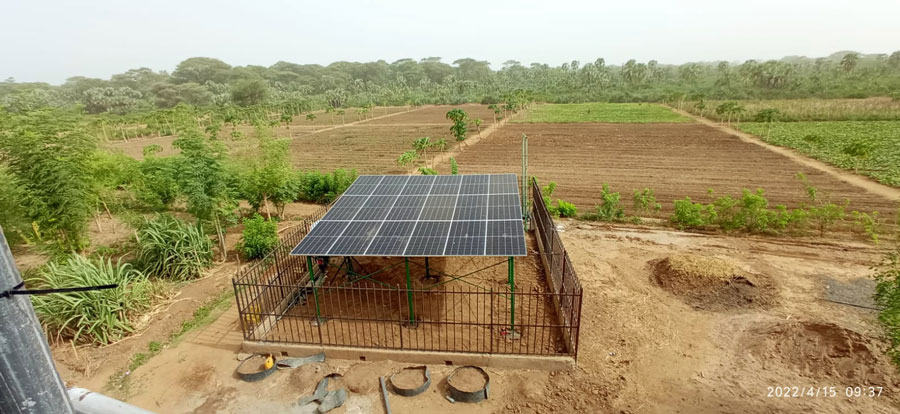
An example of one solar farm microgrid. The Farm currently maintains 11 microgrids on the property (before expansion).
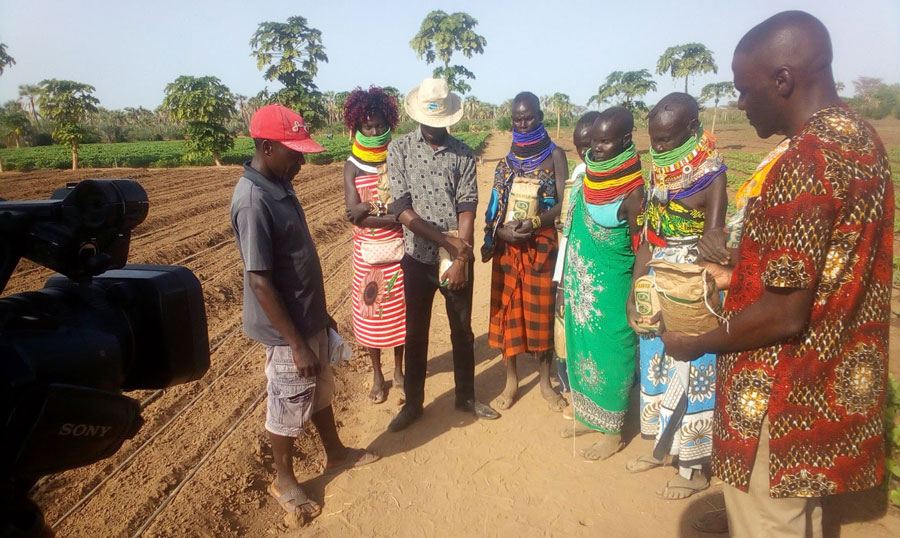
Farmers being trained about current fertilizer application processes.
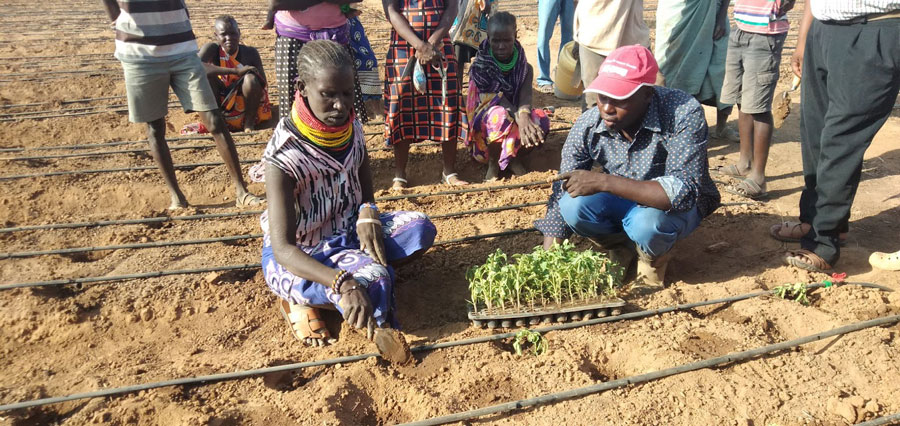
Farmers being trained on current methods to successfully plant seeds.
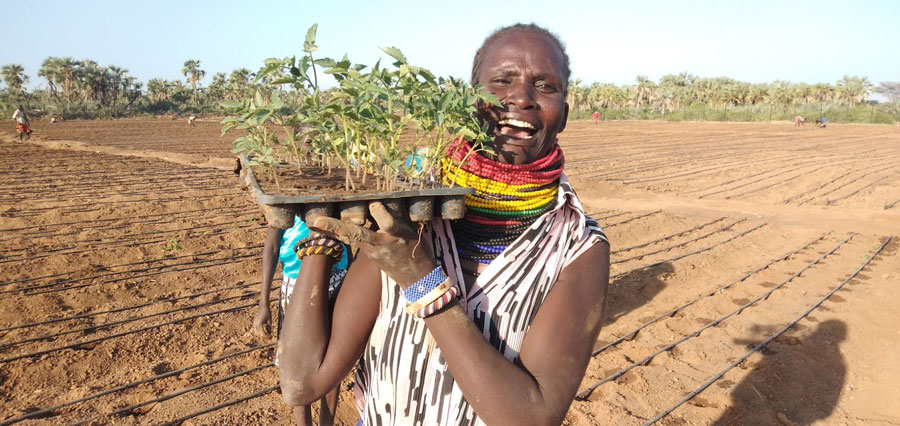
A farmer transplanting seedlings to the farm.
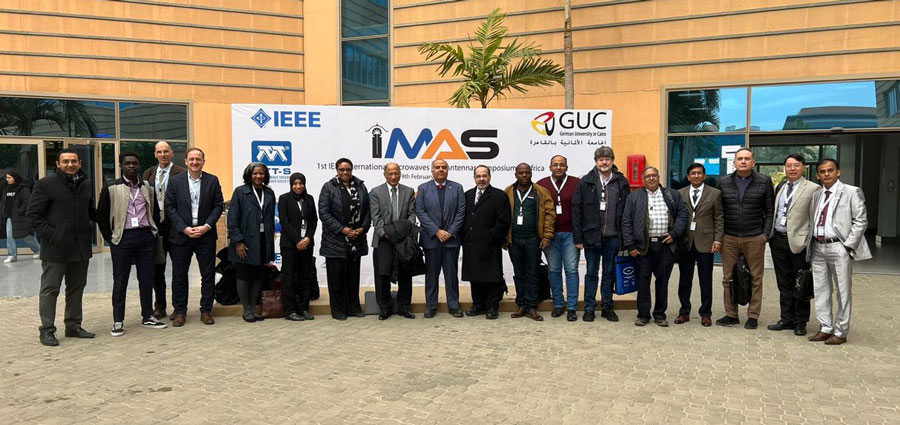
IEEE IMAS 2023: A groundbreaking conference on technology for smart villages and smart cities in Africa
IEEE IMAS 2023, the first of its kind conference, took place in German University Cairo (GUC) in Cairo, Egypt from February 6TH through 9TH, 2023. The conference was a huge success and brought together experts from around the world providing an ideal place for the exchange of scientific and technical information, both at academic and industrial levels, fostering collaboration and cooperation in the microwaves, antennas and propagation domain both at African and global levels, with an overview of the current state-of-the-art technologies in antennas, propagation, microwave circuits and measurements, highlighting the latest developments and innovations required for future applications.
IEEE IMAS 2023, the first of its kind conference, took place in German University Cairo (GUC) in Cairo, Egypt FROM THE 6TH TO 9TH of February, 2023. The conference was a huge success and brought together experts from around the world providing an ideal place for the exchange of scientific and technical information, both at academic and industrial levels, fostering collaboration and cooperation in the Microwaves, Antennas & Propagation domain both at Africa and global levels, with an overview of the current state-of-the-art in Antennas, Propagation, Microwave circuits and Measurements, highlighting the latest developments and innovations required for future applications. But one of the important sessions which took place at IMAS 2023 was the National Science Foundation (NSF) workshop which focused on the latest advances in technology for smart villages and smart cities in Africa. With a focus on sustainability, the conference aimed to promote the use of technology to create innovative solutions that could improve the lives of people in rural and urban areas in Africa.
The session featured a variety of subjects covering different topics related to technology for smart villages and smart cities. Some of the sessions included “Smart Grids and Renewable Energy,” “Cybersecurity for Smart Villages and Smart Cities,” and “Healthcare Technologies for Rural Areas.” These sessions were led by experts, researchers, IEEE Smart Village Developers and Volunteers in their respective fields and provided valuable insights into the latest trends and developments in technology for smart villages and smart cities.
This workshop which was chaired by Dr. Ed Rezek was an initiative that focused on the use of technology to promote sustainable development in Africa, with a specific focus on smart villages and smart cities.
During the workshop, several presentations were made by members of IEEE Smart Village and other Researchers from around the globe on their latest projects. Here are some of the highlights:
Honey Farming Hub
Presenter: Fidelis Filipatali,
Location: Tanzania
Summary: A program led by the Tanzanian NGO Rural Development Organization (RDO) established a honey farming hub funded partly by ISV. A pilot honey-producing site was built and operated by expert beekeepers from outside the village. The production, harvesting, and processing cycle were completed to demonstrate how the farming hubs should be operated. A significant portion of the program was to provide knowledge and training to local villagers on modern beekeeping methods. A curriculum was created, enabling local beekeepers to become fully familiar with all honey farming activities and capable of training others. The successful first phase pilot has been scaled up to a 2nd site; each site has 30 hives and together can generate 500kg of honey. The RDO had access to markets to sell the product. Local village farmers observed and were trained on the marketing process.
Solar Rice Mill Project
Presented by: Tunde Yusuff Salihu,
Location: Nigeria
Summary: This project introduces renewable energy to provide electricity for pumping water for Omupo community residents. Electricity will be used to power rice-producing machinery. The pumping station will be in the Omupo village, eliminating the need to manually transport water over 1-5 km of trails. Women are traveling up to 100 km to take advantage of the machinery.
Promise for Single-pass Microwave Rice Drying Systems
Presenter: Dr. Griffiths Atungulu, University of Arkansas
Summary: The global demand for rice is increasing and with it the need for rice drying at peak harvest time. However, the rice drying infrastructure has not grown at the same rate as the harvest and transport technology. This has resulted in the need for temporary “wet holding” of rice, which poses risks for rice with higher moisture content. To address this issue, the Rice/Grain Processing and Post-Harvest Systems Engineering Lab at the University of Arkansas is developing a one-pass drying technology for rough rice that maximizes head rice yield and ensures rice quality using 915 MHz microwaves to minimize moisture content, temperature, and material phase gradients during rough rice drying. This approach is expected to dry rice without reducing milling yield or nutritional, functional, and sensory properties of rice.
Smart Vision Gemstone Project
Presenter: Kanekwa Kachinga Kuumba
Location: Zambia
Summary: Kuumba Smart Vision Zambia is a new non-profit organization established in 2021 with the aim of empowering rural women with value addition skills in the gemstone industry. Zambia is a major producer of gemstones, accounting for at least 20% of the value of emeralds globally, but most of the gemstones are not value-added, resulting in lost earnings. Women are particularly marginalized in this industry due to stereotypes and gender and cultural expectations. Women struggle to access land and mineral resources, and they have historically experienced low remuneration compared to men. Kuumba Smart Vision Zambia is working with the Ministry of Education to train women in a two-year program to increase their participation in the industry.
STEM Education Project
Presenter: Mistura Muibi-Tijani, Ed Rezek
Location: Nigeria
Summary: VertSTEM is a non-profit organization that seeks to provide inclusive STEM education. They work with IEEE Smart Village and have received Snap Circuit Kits for their STEM outreach in Nigeria. After a survey of rural students during the COVID-19 lockdown, they are collaborating with community leaders to create solar-powered computer hubs to increase awareness of vocational opportunities in marginalized communities. VertSTEM engages students in emerging technologies such as AI and IoT, and these hubs will also serve as examination centers for students to write the UTME, with potential for profitability through payment per student usage.
Global Telehealth Network
Presenter: Irvine Lumumba, Olufemi Balogun
Location: Uganda and Kenya
Summary: The Global Telehealth Network (GTN) was founded on the principle that healthcare should be accessible to everyone regardless of location, social status, or ability to pay. Many areas in Africa are medically underserved, and GTN aims to reduce health disparities in these areas. IEEE Smart Village (ISV) is a key supporter of GTN and works with local entrepreneurs to develop solar power installations and internet access for healthcare, education, and economic development in underserved communities. ISV is working with Rotary International on this project, and three hospitals, four health centres, and two school clinics in Kenya and Uganda are already participating. Once fully operational, the project will extend to Liberia, Tanzania, and Nigeria. In addition to supporting GTN, ISV also coordinates with IEEE Smart Cities to advance the state of the art of Smart Cities technology, which involves the usage of intelligent sensors and electronic devices, communication networks and cyber security, systems integration, intelligence and data analytics, and management and control platforms to enhance its services and existing infrastructures.
Challenges and Opportunities for Smart Cities in Africa
Presenter: Dennis Kemboi Cherogony
Summary: The rapid advancement of science and technology prompts consideration of the potential social and environmental impacts. Urbanization and industrial activity in cities have resulted in various problems, including environmental issues. As industrial regions are revitalized and relocated, there is a need for new methods of urban development. The UN’s 2030 Agenda for Sustainable Development calls for innovative and sustainable methods of creating human settlements. Sustainable cities and communities are one of the Sustainable Development Goals, which involve creating opportunities, affordable housing, and resilient societies through investment in public transport, green spaces, and participatory urban planning and management.
Engineering Challenges and Smart Cities in Africa
Presenter: Olufemi A. Balogun, Oto-obong John Effiong
Location: Nigeria
Summary: VAAV’s product, the PowerCube, a 500W inverter and energy storage system, is an innovative solution that addresses the issue of energy access in underserved communities. By providing clean, reliable and affordable electricity to communities, it serves as a tool for accelerating growth and transformation into Smart Villages, and eventually Smart Cities. This creates a self-sustaining ecosystem that promotes interconnectivity, STEAM education, agriculture, and transformation, while also providing opportunities for collaboration among communities. Additionally, the PowerCube facilitates energy access and management, sensing, and automation in areas such as transportation, agriculture, healthy living, and clean environment, among others. Overall, the PowerCube can be seen as a critical tool in facilitating rural development and urbanization while promoting sustainability in Africa and beyond.
Sustainable smart applications made by university students
Presenter: Hady Habibn Fayek
Location: Egypt
Summary: Egypt is taking sustainable and intelligent steps in its communities, serving as a model for other Middle Eastern countries. Engineering students are playing a key role in developing renewable energies, sustainable water management, and incorporating IoT and artificial intelligence into their projects. These projects are transforming into start-ups and products accessible to Egyptian citizens of different educational and financial backgrounds. Examples of such projects include wind turbines, on-grid PV solutions, IoT electric vehicles, and conversion of gasoline cars to electric vehicles, all of which have been developed by undergraduate students at Heliopolis University.
Role of Wireless Chargers for Electric Vehicles in Smart Cities
Presenter: Sampath Jayalath
Location: South Africa
Summary: This project provides an introduction to wireless charging technology for electric vehicles and its impact on the smart grid. It explores different modes of operation, such as static, stationary, and dynamic, and state-of-the-art solutions proposed. The project also discusses the challenges around harmonic mitigation, power factor control, and bidirectional operation of wireless power chargers. Additionally, it highlights the opportunities and challenges around developing smart charging infrastructures, routing, scheduling, and planning strategies in smart cities. Finally, it examines the future of this technology in the global and African context to enable smart cities.
Overall, IEEE IMAS 2023 was a ground-breaking conference that highlighted the importance of technology for smart villages and smart cities in Africa. With the success of this conference, we can hope to see more initiatives and projects that use technology to promote sustainable development in Africa and around the world.
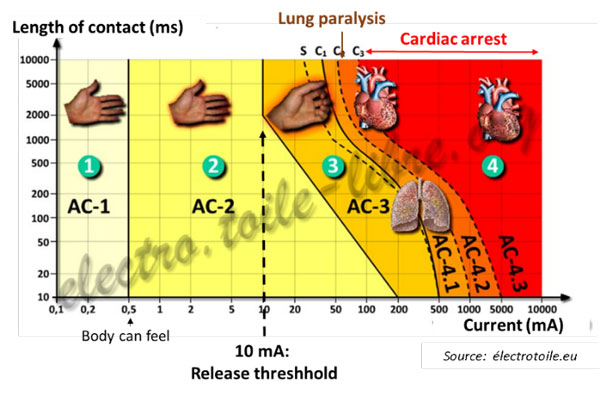
Electrical risks: Effect of electricity on the human body
Contrary to common perception, voltage is not the determining factor during accidental contact with electricity, but the magnitude of current and the duration of exposure. The amount of current, in turn, is determined by the resistance of the human body at the time and point of contact. Accordingly, clothing, and proper shoes will help alleviate the problem, while water, wet hands, among other factors, make it worse.
Contrary to common perception, voltage is not the determining factor during accidental contact with electricity, but the magnitude of current and the duration of exposure. The amount of current, in turn, is determined by the resistance of the human body at the time and point of contact. Accordingly, clothing and proper shoes will help alleviate the problem, while water, wet hands, among other factors, make it worse.
The ISV Safety, Quality, Standards and Reliability Committee is proposing in this Newsletter a series of short articles on various aspects of basic electrical safety. We hope the reader will find these useful. Feel free to ask questions or suggest topics of interest to you (bruno.lequesne@ieee.org).
Electricity has been a blessing for humanity, and we constantly find new uses for it. Unfortunately, under the wrong circumstances, it can be dangerous and even fatal. This can happen in three ways: Through direct contact with the body, through an explosion (arc flash), or indirectly by starting a fire. Here we will look at why electricity can be harmful to the human body through contact. We will cover arc flash in a future article.
One key reason electricity is harmful to humans is that, in fact, the body (and life forms in general) use electricity for a number of biological mechanisms. Nerves are conductors, and impulses from the brain travel to muscles as electrical impulses, with one critical muscle here being the heart. So, the problem is, if the body comes into contact with some electric potential, it has readymade paths (the nervous system) to travel through the body.
The effect of contact with electricity depends primarily on two factors: the level and duration of current one is exposed to (Current x Time), and the path electricity uses through the body. Concerning the second aspect, one must consider the actual path through the body. As shown on Fig. 1, two common paths are between one hand touching an energized conductor and a foot (or feet) touching the ground, or the other hand touching a wall, tree, etc.
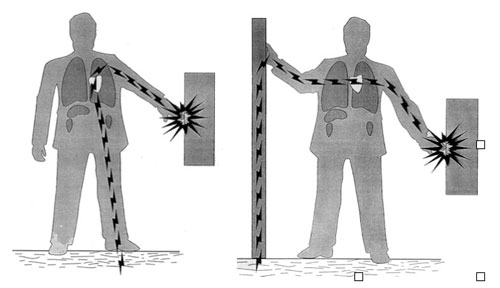
Fig. 1: Electrical paths through the body
Source: “Le risque électrique”, Académie de Caen, esst.discip.ac-caen.fr
The biggest issue when it comes to the danger of electricity is if the path of the electrical current goes through the heart. Since the heart is a muscle, it will contract, and stay contracted as long as the current flows. An aggravating factor is that the muscles in the hand will also contract, with the fingers gripping the object that is the source of electricity. The brain cannot counteract these if the accidental current is strong enough to overwhelm the nerve impulses, and the victim is powerless.
In technical and engineering terms, general rules have been established over time. It is widely considered that a current of 10 milliamperes through the body is a threshold above which muscles contract and cannot let go, that is, the danger zone. The human body has a resistance of 1,000 ohms, with quite a bit of variation, depending on body size, and especially, the nature of the skin contact, dry skin versus wet skin, etc. The figure below plots various danger levels as a function of current (x-axis) and length of contact (y-axis).
Exposure to electricity can be by directly touching an exposed conductor. But much more often, the contact is indirect: For instance, by grabbing or touching a piece of equipment which is itself in contact with a conductor due to some fault. In any event, what the body touches is at some voltage “V”. Understanding the level of body resistance “R”, one gets the current that will flow through the body (V/R). With a 10mA threshold, it does not take high voltages to be at risk.

Fig. 2: Effect of current on the body as a function of current level and duration
Source: https://electrotoile.eu/risque_electrique.php
From this quick overview, simple precautions come to mind that can go a long way in terms of prevention:
- Keep a safe distance.
- Avoid indirect contact: Ladder touching a line etc., especially with metallic tools.
- Test, if possible, to see if a circuit is live before approaching.
- Increase body resistance as much as possible:
- Clothing, shoes, and gloves (or equivalent on the hands) will significantly increase resistance.
- Water, and humidity, including sweat, drop contact resistance quickly: Dry hands and environment are critical.
For further reading:
Electrical Safety International, https://www.esfi.org/home-safety/electrical-safety/
“Le risque électrique, les dangers de l’électricité”, https://electrotoile.eu/risque_electrique.php (in French)
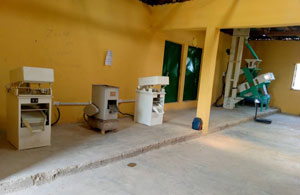
Shaybis Nigeria Limited leads the way in Sustainable Energy and Food Production
As concerns over climate change continue to mount, more and more companies are turning to renewable energy as a way to reduce their carbon footprint. One such company is Tunde Salihu’s Shaybis Nig Ltd., which has taken a proactive approach to the issue by setting up microgrids powered by renewable energy in local communities across Kwara state, Nigeria.
As concerns over climate change continue to mount, more and more companies are turning to renewable energy as a way to reduce their carbon footprint. One such company is Tunde Salihu’s Shaybis Nig Ltd., which has taken a proactive approach to the issue by setting up microgrids powered by renewable energy in local communities across Kwara state, Nigeria.
Through IEEE Smart Village, Shaybis has been able to provide local communities with access to affordable and reliable electricity, while simultaneously reducing their dependence on fossil fuels. The microgrids, which are made up of small-scale power generation systems, have been a game changer for many people in the region, who previously had an extremely limited access to electricity.
But Shaybis hasn’t stopped there. They have also been working on creating sustainable foods at a sustainable price using sustainable energy. One of their latest ventures involves rice milling, which is a notoriously energy intensive process. By using solar power to produce and process their rice, Shaybis has been able to significantly reduce their carbon footprint and cost of production while at the same time producing high-quality rice that is both healthy and affordable. They have installed a mini grid in their factory to power all the processing equipment solely by solar energy.
This innovative approach has allowed Shaybis to produce high-quality rice that is both healthy and affordable, while demonstrating their commitment to sustainability. And recently, their efforts were rewarded when their rice was approved by Nigeria’s National Agency for Food and Drug Administration and Control (NAFDAC), marking a major milestone for the company. This approval is a testament to the company’s commitment to sustainability and their innovative approach to food production. By using renewable energy and other sustainable practices, Shaybis is leading the way in creating a more sustainable future for all.
Shaybis is a shining example of how businesses can make a positive impact on the environment and society as a whole. Through their use of renewable energy and sustainable practices, they have set a new standard for food production that others can aspire to. We can only hope that more companies follow in their footsteps and help build a better, more sustainable world for all.
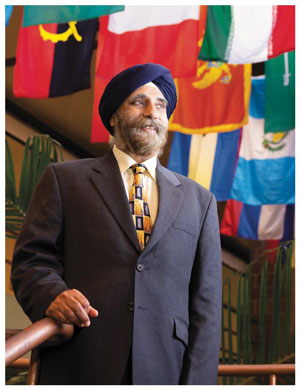
ISV Congratulates Dr. Singh for receiving the prestigious 2022 Duncan Fraser Global Award
ISV congratulates Pritpal Singh for receiving the 2022 Duncan Fraser Global Award for Excellence in Engineering Education. Continue to inspire, educate and make society a better place. Read more →
Important links you don’t want to miss!
Not an IEEE Member? Here’s how to join IEEE https://www.ieee.org/membership/join/index.html
Click here to learn more about IEEE membership and special discounts for developing nations and low-income economies at https://www.ieee.org/membership/join/emember-countries.html
For more information about discounts for societies, check out the following link: https://www.ieee.org/communities/societies/index.html
For contributions towards many of such projects in memory of Pat Ryan, visit IEEE Smart Village via the following online page : https://www.ieeefoundation.org/PatrickRyan
